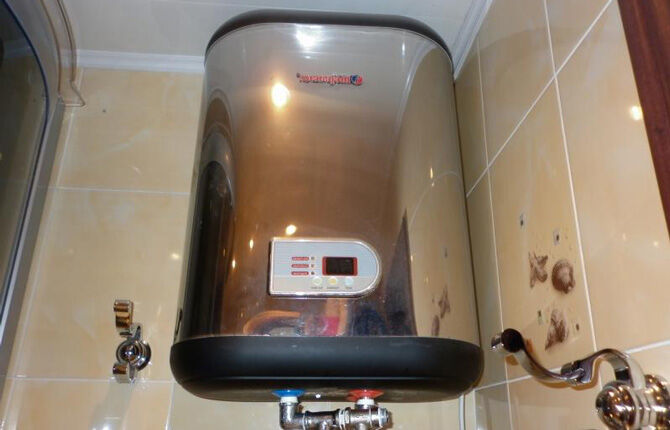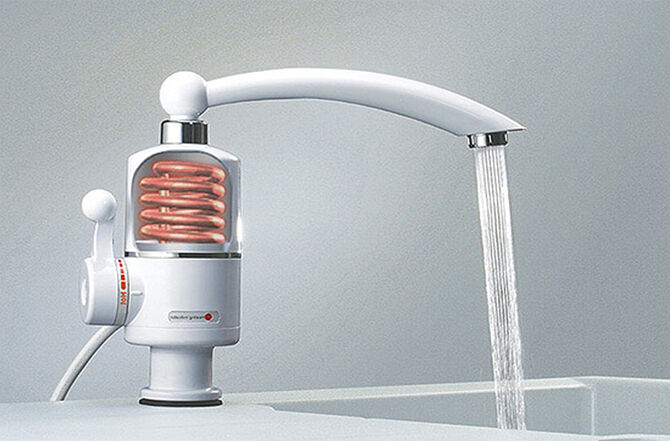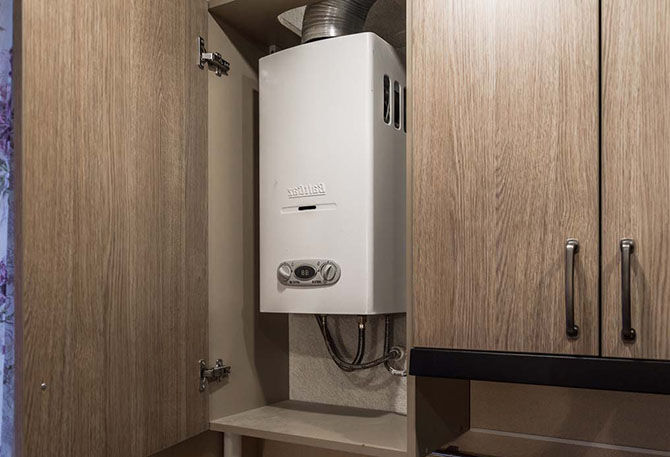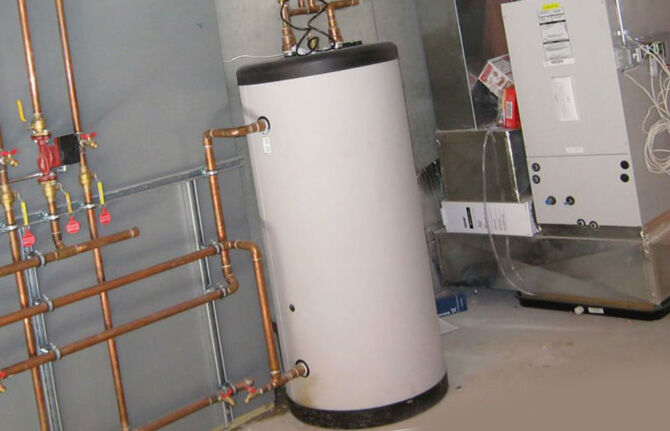What types of water heaters are there - advantages and disadvantages
Hot water supply is necessary for comfortable living conditions. Before choosing a water heater for the bathroom, take into account its type and technical characteristics.This helps to correctly connect the hot water supply to a private house or apartment.
The content of the article:
Types of water heaters
Manufacturers produce models designed to provide hot water supply (DHW). They differ in design and type of energy carrier. All bathroom appliances are divided into several groups:
- Cumulative. The water is heated in the container.
- Flow-through. No tank.
- Electrical. The heating element is connected to the AC power supply.
- Gas. The water is heated by a gas burner.
- Indirect heating. The water is heated by a heating system.
The owner of a house or apartment himself determines which water heater is best to choose for the bathroom. It takes into account the most accessible type of energy carrier.
Storage water heater: advantages and disadvantages
Devices of this type have a capacity in their design. Its volume is selected depending on the number of people using the hot water supply. Usage storage water heaters provides for the presence of pressure in the water supply system. It is necessary to displace the contents from the tank.
The temperature is constantly maintained within the specified limits by the thermostat. It reads data from the temperature sensor and turns the heating on or off when the indicators change. For safety reasons, manufacturers equip devices with a safety valve. It is necessary to relieve excess pressure that occurs when the contents heat and expand. The devices have advantages:
- Supply of liquid simultaneously to several points of collection (bathroom, kitchen, etc.). The tank is connected to the hot water system.
- High fluid temperature.The indicator reaches 80°C, it is adjusted separately for each case.
- Possibility of installation at a great distance from the bathroom.
The disadvantages of storage-type devices include long heating times. When the entire volume of water is used up, it will take 60-180 minutes to heat up.
Instantaneous water heater
There is a selection of flow-type products on the market.
Their design provides for heating the liquid directly at the point of collection. Water flows through thin channels. At the same time, a powerful electric water heating element heats the flow. There is also gas instantaneous water heaters.
When choosing a boiler, pay attention to the technical characteristics of the cold water supply system. Manufacturers produce pressure and non-pressure models.
Heating in such water heaters is carried out using electricity or gas. The devices have advantages:
- High warm-up speed. The hot water in the bathroom does not run out.
- Small sizes. The dimensions of the devices allow them to be installed in minimal free space.
- Easy to install. The device is placed directly in the bathroom or near the water intake point.
Electric water heater
On to the cons flow electric models include low water temperature and the need for powerful wiring. When passing through the channels, the water does not have time to heat up to a high temperature. A flow-through boiler is a high-power device. In order not to reduce the resource of electrical wiring in a house or apartment, the device is connected with a separate wire to the panel.
To avoid electric shock, flow and storage models are grounded.
The negative consequences of using electric boilers are increased electricity bills. The advantage of this model is the possibility of installation in high-rise buildings where the operation of gas equipment is prohibited.
Gas water heater
Manufacturers produce devices that use gas as an energy carrier.
Depending on the model, the devices run on liquefied fuel or use low-pressure gas. Such bathroom water heaters can be divided into 3 groups:
- Cumulative type. They have a container for storing and heating liquid.
- Flow-through. Heating is carried out by a burner.
- Combined. Warm water in the bathroom comes from the tap constantly; to achieve a high temperature, the user must wait a certain period of time while the contents heat up.
The advantages of a gas water heater include the heating speed. When determining the power of the product, there is no need to take into account the technical characteristics of the household network. You can install products of different capacities in the bathroom.
Disadvantages of gas equipment:
- Difficult to install. For installation, you must use the services of specialists.
- The need to remove combustion products. For this purpose, a chimney is installed. In some cases, its production is associated with difficulties.
Indirect heating boiler
The design is a tank, the contents of which are heated by coolant from the heating system. It is used for hot water supply in dachas and private houses. A heat exchanger is installed in the tank, which is connected to the heating. The coolant circulates through the circuit and transfers some of the heat to the contents of the tank.
The advantage of the design is the connection of a large-volume container and its use at a distance from the bathroom.The boiler is installed in a separate room, while hot water circulates in the system. The water in the bathroom comes out hot immediately after opening the tap.
Flaw indirect heating boiler – the need for a heating boiler with a power reserve. This requires large energy costs.
The person himself chooses the type of water heater separately for each case. Different types of models have pros and cons. This is taken into account before purchasing the product. What boiler do you use to provide hot water? What criteria did you take into account when choosing? Share in the comments.
The video below will answer the questions: How to choose a water heater? Cumulative or flow-through? Functions and features of the latter.








